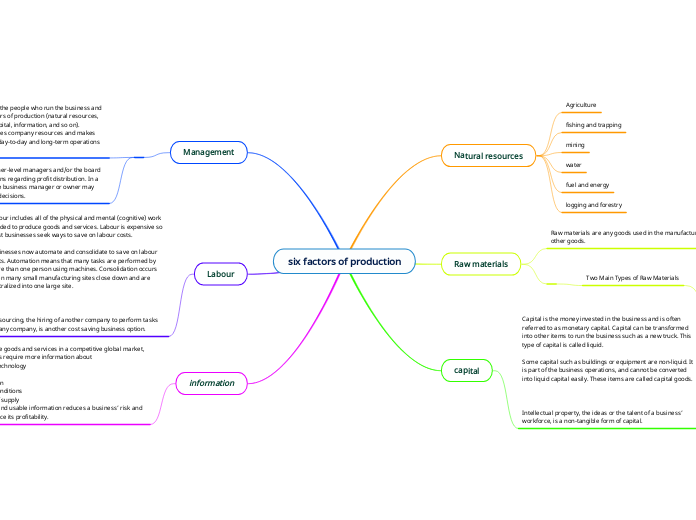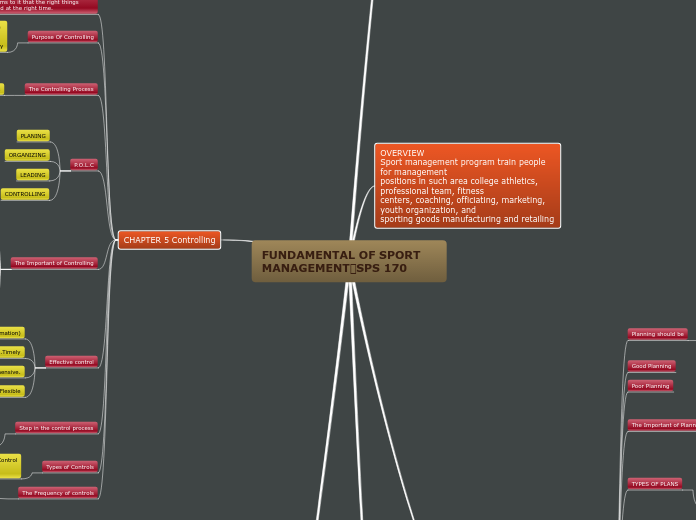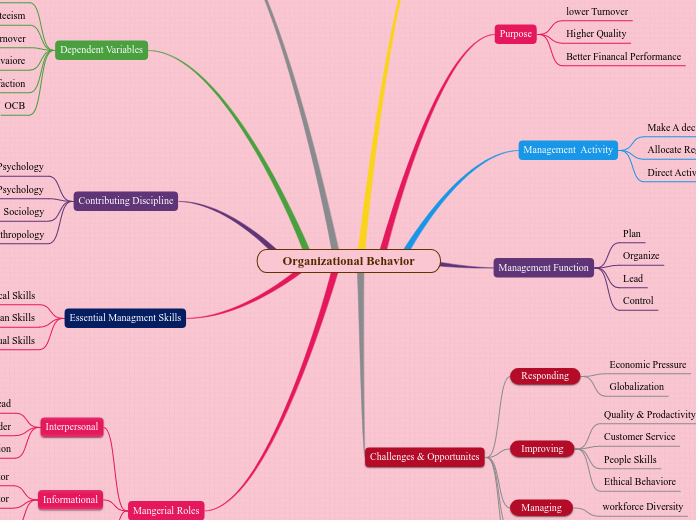Administration and Organizations1
Its evolutionary development and proposals for the new century
Classic administrative thought
Four are the characters that will become milestones of this classic administrative thought: Frederick Winslow Taylor, Henri Fayol, Max Weber and Elton Mayo, with clear proposals that constitute the pillars on which a whole century will be built and developed. of evolution of this thought, characterized by a response to capitalist interests, a focus on internal behavior of the organization, the division between who thinks and who executes, the metaphor of the machine (of the clock), the privilege of productivity and efficiency above all, Homo economicus and the recognition of the Social Being.
Topic principal
70'S
Management by Objectives
The management by objectives and self-control refers to the orientation that the commercial company must have: prepare a true team and amalgamate individual efforts in a common effort, where all employees must aim to contribute to the organization from their functions. and assigned tasks, without losing sight of its general objectives. Thus, the leaders have the function of ensuring that the
Administrative decision making
The core foundation of the decision-making school is not based exclusively on information systems, but on the capabilities and skills to filter and process it. According to the levels of decision, it is observed how the level of physical production routines devalues and deprives of its decision-making capacity, subordinate and inferior work, as described by Aktouf the non-intelligent executing employee. It is important to clarify that the decision process cannot become the center, much less the end. A satisfactory decision cannot be totally neutral and satisfactory for all.
The study of organizational culture and the organization as a culture
As this line advanced, it became clear that there was no master method to manage all companies in a way that would lead them to success, since each company had a heritage, a environment, a history, that is, a unique and particular culture. On the other hand, the positioning of the culture perspective in organizations is also closely linked to the Japanese transformation that, in the late 1970s and early 1980s, burst forth with great strength and dominated international markets, with high development rates and low unemployment rates, which is explained, according to organizational theorists, by a strong relationship between culture and organizational management.
90'S
Communication, technology, information and virtuality
Katz and Kahn provide one of the first and most important contributions of the systemic position to the administration, by defining the organization as an open system in constant interaction with its environment. With the contingency theory, the shift of observation from inside to outside of the organization takes place. This approach points out that it is the environmental characteristics that determine the organizational characteristics, and that it is in the environment where the causal explanations of the latter can be found. This process of change in information technology means profound changes within the organization and in the relationships that they maintain with each other.
The virtual organization: It is a capable representation, that is, despite not having the same characteristics as a traditional organization, it has a virtual work team whose members operate in different cities but are closely related to each other, making processes equally beneficial to the organization. For an organization, the cost of a virtual transaction represents one tenth of the cost of a traditional one, due to the reduction of personnel, office leases, among others.
Creativity and Innovation: In complex organizations, creativity and learning occur not only in established structures, but also generate interesting effects in the networks of which they are part, understanding networks as flexible, non-hierarchical, spontaneous and adaptable structures. that greatly facilitate and favor organizational creativity. The creation of support networks facilitates the activity of creation to the extent that it provides security to the organization. Thanks to these networks of relationships, complex organizations can be considered open systems in constant exchange with the environment, where the coexistence of rules and flexibility is facilitated, which is called a paradox stage.
Competitiveness: A topic of strong discussion and controversy around the different proponents of organizational and administrative theories has been how to achieve maximum productivity, maximum efficiency with the rational use of the resources that are possessed; In this sense, each one of the theories or models - so far exposed in one way or another have tried to solve this problem. Although today the question has not changed, this document aims to arrive at a technical, social and humanely-ethical proposal.
Administration Challenges
After going through a century of administrative thought, it is possible to conclude that we are facing a great paradox, at the beginning of the 21st century.
80's
Reengineering
it means abandoning long-established procedures and taking a fresh look at the work that goes into creating a company's product or service and delivering something of value to the customer; In other words, it is about establishing new forms of administration, procedures, execution of tasks.
Competitive Benchmarking: It appears in the 1980s with the Xerox experience, as a useful process for collecting key information from the competition and from any organization, through the comparison of their own practices with those of organizations considered leaders or innovators. in that specific business function. Spendolini defines it as a systematic and continuous process to evaluate the products, services and work processes of organizations that are recognized as representatives of best practices, with the purpose of making further improvements. It is closely linked to learning and professional development, that is, a tool for the organization that learns from others. Its implementation requires an adequate logical basis for its use, creating the mentality of the process and its benefits in all its employees, as well as the awareness that the process must be used in specific and determined situations, that is, with a clear objective. and concrete.
Subcontracting: Also known as subcontracting, outsourcing or outsourcing, it is one of the consequences of the new economic liberalism aimed at deregulating labor relations, to make it easier for companies to concentrate on their critical processes, and deliver the rest to third parties.
It is to ensure that companies concentrate on what they know how to do best and that they contract the rest with external suppliers to maintain the normal operation of the organization. It is a practice of work specialization and the current flexibility of labor relations. It is increasingly the common answer to the question that entrepreneurs ask themselves to provide better service to customers.
The philosophy of total quality and productivity
Quality control is a highly rational instrument for the management of organizations, whose main objective is to try to reduce and control the costs of operations and increase productivity at all levels of the organization. , which is expressed in profits. The activities of the quality circles must be consistent with human nature to be applicable anywhere in the world. Doing what must be done is placing the objective in a situation of prosperity felt as a need for the worker in relation to satisfying the requirements of consumers, which places them in a position of consultation, innovation and creation for the competitiveness and profitability of the products.
Strategic planning
In the first place, it distinguishes normative approaches, that is, those that emphasize the way in which the strategy should be conceived, rather than the way in which it is effectively carried out. and the School of positioning. Secondly, it refers to the descriptive approaches that consider the specific aspects of strategy development, being less interested in the formulation of an ideal behavior and delving into the actual processes of strategy formulation.
Contemporary Administrative Approach
In this sense, the following are mentioned: the Management by Objectives APO (Drucker) and the development of the Strategy (Chandler, Mintzberg); Decision Making (Simon); the Political Approach (Mintzberg, Morgan); Japan and its philosophy of total quality and continuous improvement (Deming, Juran, Ishikawa); and Organizational Culture (Jaques, Goffman, Barnard, Selznik, Amado, Trévenett, Firsirotu).
The 80's:
It stimulates the incorporation of new information technologies and is oriented more towards processes than towards tasks, looking for a multi-skilled worker and replacing that super-macro-specialized worker.
The 90's
The nineties are characterized by approaches that respond to changing and volatile conditions and characteristics of the environment: a great technological revolution; an accelerated development of cybernetics, information technology and communication processes.
Breaking point: General systems theory
In short, with the appearance of the TGS, administrative thinking undergoes a process of mental openness; In other words, it is an open organizational approach, with an emphasis on the environment and its demands on organizational dynamics; that recognizes a constant interaction with the environment, a continuous process of exchange, communication and feedback; assumes the ideas of self-control and self-organization, the recognition of the environment and of the human being as a subject of action; endorses the contingency approach, the positioning of functionalism, and finally leads us to the disappearance of the human being... who ends up merging with the system and being one more subsystem of it. This approach changes the course of organizational theories, not in particular because he was interested in contributing to the administration, since it was not his idea and even less his interest, but because through his theory the very object of study of administration, that is, the organization, begins to see itself as a social system immersed in a suprasystem called society and in particular to recognize itself as a vital component of it. Intervening in its conceptualization, ideas such as the one exposed by Homans in which he describes the components of a social system as tasks, interactions and feelings of people, which are interdependent, as well as the open system (Parsons) in which they stand out. its characteristics of ability to adapt, achieve its goals, integrate its parts, allow the maintenance of values and patterns of interaction. The neoclassical paradigm arises in a time of great economic expansion, after the 1929 crisis, which brings with it a great complexity in the growing organizations, a new rationalism and a much stronger idea of the administrative process proposed by Henry Fayol, which leads to consider the paradigm of the administrative man.









